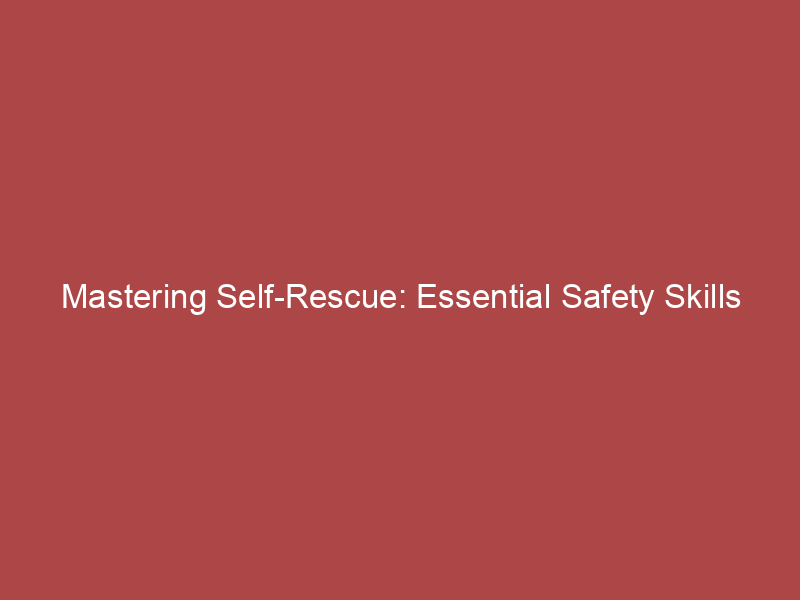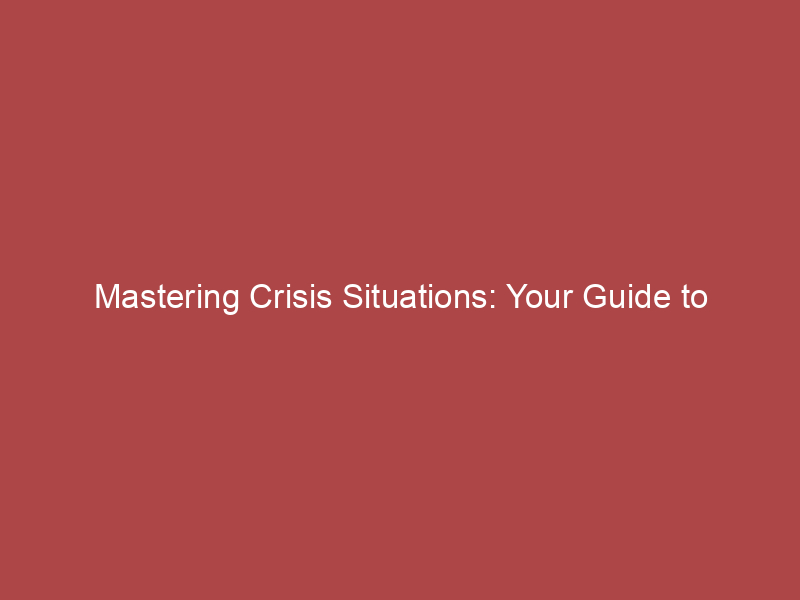
Introduction to Self-Rescue Techniques
Self-rescue techniques are crucial skills that everyone should learn. These techniques can help you survive in emergency situations when help is not immediately available. In this section, we will discuss the importance of self-rescue and provide an overview of common emergency situations where these skills can be lifesaving.
- Understanding the importance of self-rescue
Self-rescue is the ability to help oneself out of a dangerous or potentially life-threatening situation. It’s an essential skill that can make a significant difference in survival scenarios. According to statistics, a large number of accidents occur in places where immediate help is not available. In such situations, knowing how to self-rescue can be the difference between life and death.
Self-rescue techniques not only equip you with the skills to survive but also boost your confidence and mental strength. They help you stay calm and composed in emergency situations, enabling you to make better decisions. In essence, self-rescue is not just about survival; it’s about resilience, self-reliance, and the will to live.
- Overview of common emergency situations
There are numerous emergency situations where self-rescue techniques can be invaluable. Here are a few examples:
| Emergency Situations | Self-Rescue Techniques |
|---|---|
| Getting lost in the wilderness | Navigation skills, signaling for help, finding shelter |
| Caught in a fire | Stop, drop and roll, staying low to avoid smoke inhalation |
| Trapped in a sinking car | Seatbelt removal, window breaking, swimming to safety |
| Caught in a rip current while swimming | Staying calm, swimming parallel to the shore |
These are just a few examples of emergency situations where self-rescue techniques can be lifesaving. The key is to be prepared and equip yourself with the necessary skills to handle any situation that comes your way.
In the next section, we will delve deeper into essential safety skills training to further enhance your self-rescue abilities.
Essential Safety Skills Training
Learning essential safety skills can be a lifesaver in emergencies. This section will cover basic first aid and other vital safety skills.
Basic First Aid
- Understanding the ABCs of first aid: The ABCs of first aid stand for Airway, Breathing, and Circulation. These are the primary checks you need to perform when you find someone injured.
- How to perform CPR: Cardiopulmonary Resuscitation (CPR) is a lifesaving technique useful in many emergencies, including heart attacks or near drownings, in which someone’s breathing or heartbeat has stopped.
- Dealing with fractures and sprains: Knowing how to deal with fractures and sprains can prevent further injury and speed up recovery.
- How to use a fire extinguisher: Using a fire extinguisher correctly can put out a small fire and prevent it from spreading.
- Understanding fire escape plans: A well-planned fire escape route can save lives during a fire emergency.
- Regular drills and simulations: Regular practice of safety drills can prepare you for real emergencies.
- Importance of continuous learning and updates: Keeping up-to-date with the latest safety procedures and techniques is crucial for effective response in emergencies.
- Finding food and water: In survival situations, knowing how to find food and water is essential.
- Building a shelter: A shelter can protect you from harsh weather conditions and wild animals in survival situations.
- Signaling for help: Knowing how to signal for help can increase your chances of being rescued in emergencies.
- Escaping from a sinking car: If you’re trapped in a sinking car, knowing how to escape can save your life.
- Surviving a building collapse: In the unfortunate event of a building collapse, certain survival techniques can increase your chances of survival.
- Keeping a clear mind under pressure: Staying calm and thinking clearly can help you make better decisions during emergencies.
- Using everyday items for self-rescue: Everyday items can be used creatively for self-rescue in emergencies.
- Virtual Reality (VR) in safety training: VR can provide realistic simulations for safety training, making it more effective.
- Online safety courses and resources: Online resources can provide valuable information and training for safety skills.
- Importance of physical fitness: Being physically fit can increase your ability to handle emergencies.
- Learning from real-life case studies: Real-life case studies can provide valuable lessons and insights into handling emergencies.
- Stop, Drop, and Roll technique: This technique is used when a person’s clothes catch fire. It can prevent serious burns.
- Creating a family fire escape plan: Having a well-planned fire escape route for your family can save lives during a fire emergency.
- Teaching kids to float: Floating is a survival skill that can prevent drowning.
- Importance of swimming lessons: Swimming is a valuable skill that can save lives in water-related emergencies.
Final Thoughts
Reviewing the key points can reinforce the learning and make it easier to remember during emergencies. Continuous learning and practice can make you more confident and effective in handling emergencies.





